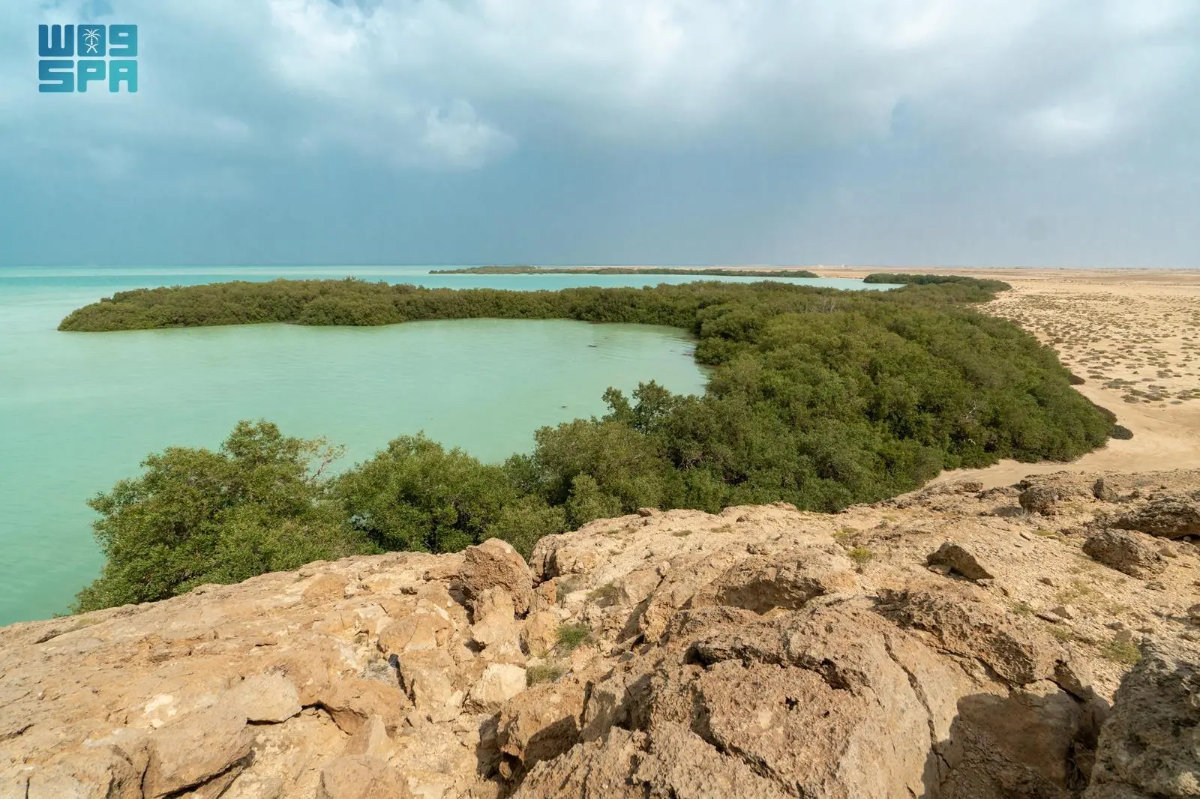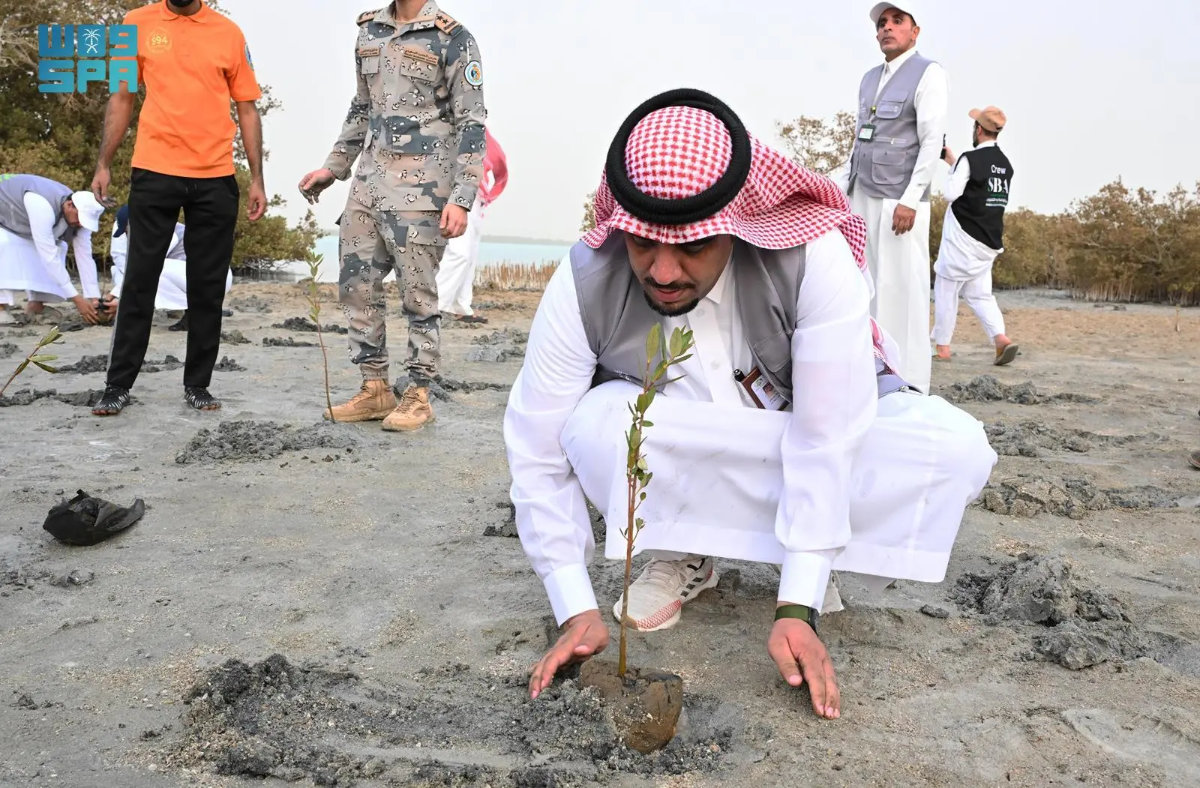RIYADH: The Kingdom is on track to achieve its goal of planting 100 million mangrove trees by 2030, in line with the Saudi Green Initiative and Vision 2030.
The Saudi Arabian News Agency recently quoted the progress report of the National Center for Vegetation Development and Combating Desertification and announced that about 13 million mangrove seedlings have been planted since the ambitious coastal forest cover program began a year ago.

Marine scientists say mangroves work with coral reefs and seagrass beds to keep coastal areas healthy. (SPA)
Most of the projects reported by the NCVC are currently taking place along the Kingdom's Red Sea coast, with Jazan province topping the list with 5.5 million seedlings. Makkah province with 2.4 million, Madinah 2 million, Tabuk 1.5 million and Asir 1 million are next.
According to this report, Eastern Province has planted 500,000 saplings along the coast of the Persian Gulf.
However, before the official launch of the project along the Arabian Gulf, the center noted that 700,000 saplings have already been planted. This included 200,000 people on Ras Abu Ali Island in Jubail Province and 500,000 in Al-Wajj Province.
“The project includes fencing and caring for the saplings, to protect them from algae and seaweed, and to protect the sites from grazing and encroachment,” SPA reported.
Besides, NCVC and Asir District Development Authority launched the 'Mangrove Restoration' program on Wednesday. This was on the occasion of the United Nations World Mangrove Ecosystem Day, which is celebrated every year on July 26.

Mangrove planting in Albarak province, Asir region. (SPA)
The campaigns planted 500 mangrove saplings on the shores of Albarak province. Abdallah bin Ali bin Mohia, governor of Al Barak and mayor Nasser Saeed al-Shahrani were the leaders of this event.
SPA reported that it aims to raise awareness about the importance of planting and protecting mangroves amid climate change and global warming.
Marine scientists say mangroves, working in harmony with seagrass beds and coral reefs, keep coastal areas healthy.
They have been found to be essential habitats for thousands of species, stabilizing shorelines, preventing erosion and protecting communities from waves and storms.
According to the American Museum of Natural History, an estimated 75 percent of commercially caught fish spend time in mangroves or depend on food webs that can be found in these coastal forests.
Many countries suffering from severe mangrove degradation have continued to deplete fish stocks.
